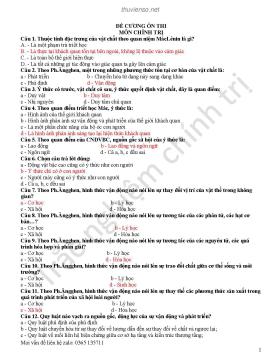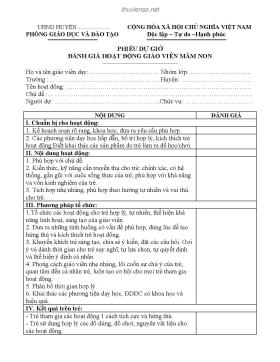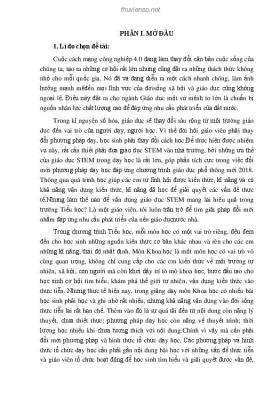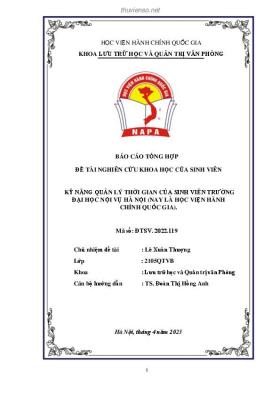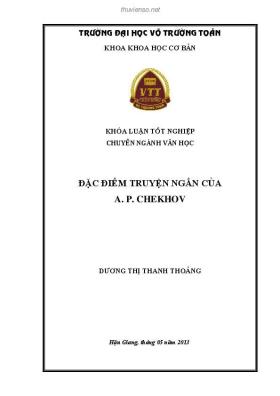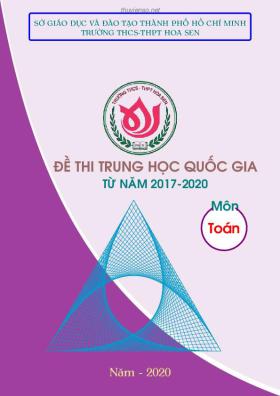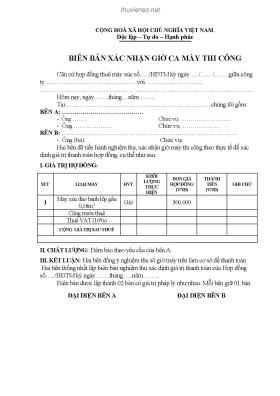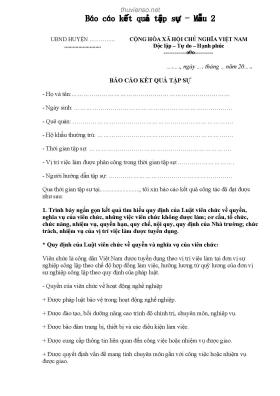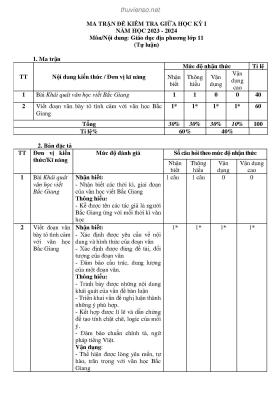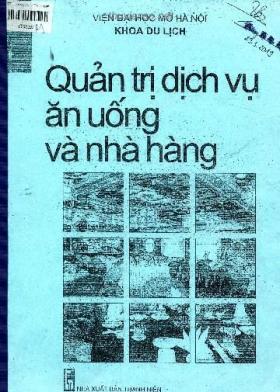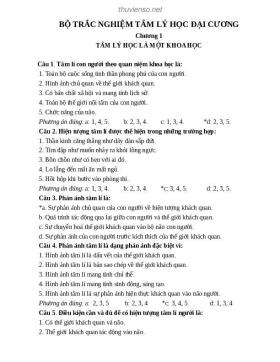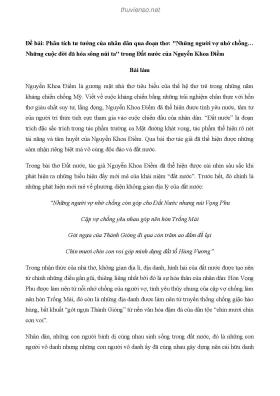
Chapter 118. Infective Endocarditis (Part 8)
Số trang: 5
Loại file: pdf
Dung lượng: 53.83 KB
Lượt xem: 18
Lượt tải: 0
Xem trước 2 trang đầu tiên của tài liệu này:
Thông tin tài liệu:
Organism-Specific TherapiesStreptococciTo select the optimal therapy for streptococcal endocarditis, the minimum inhibitory concentration (MIC) of penicillin for the causative isolate must be determined (Table 118-4). The 2-week penicillin/gentamicin orceftriaxone/gentamicin regimens should not be used to treat complicated native valve infection or prosthetic valve endocarditis. The regimen recommended for relatively penicillin-resistant streptococci is advocated for treatment of endocarditis caused by organisms of group B, C, or G. Endocarditis caused by nutritionally variant organisms (Granulicatella or Abiotrophia species) and Gemella morbillorum is treated with the regimen for moderately penicillinresistant streptococci, as is prosthetic valve endocarditis caused by these organisms or by...
Nội dung trích xuất từ tài liệu:
Chapter 118. Infective Endocarditis (Part 8) Chapter 118. Infective Endocarditis (Part 8) Organism-Specific Therapies Streptococci To select the optimal therapy for streptococcal endocarditis, the minimuminhibitory concentration (MIC) of penicillin for the causative isolate must bedetermined (Table 118-4). The 2-week penicillin/gentamicin orceftriaxone/gentamicin regimens should not be used to treat complicated nativevalve infection or prosthetic valve endocarditis. The regimen recommended forrelatively penicillin-resistant streptococci is advocated for treatment ofendocarditis caused by organisms of group B, C, or G. Endocarditis caused bynutritionally variant organisms (Granulicatella or Abiotrophia species) andGemella morbillorum is treated with the regimen for moderately penicillin-resistant streptococci, as is prosthetic valve endocarditis caused by theseorganisms or by streptococci with a penicillin MIC of >0.1 µg/mL (Table 118-4). Enterococci Enterococci are resistant to oxacillin, nafcillin, and the cephalosporins andare only inhibited—not killed—by penicillin, ampicillin, teicoplanin (not availablein the United States), and vancomycin. To kill enterococci requires the synergisticinteraction of a cell wall–active antibiotic (penicillin, ampicillin, vancomycin, orteicoplanin) that is effective at achievable serum concentrations and anaminoglycoside (gentamicin or streptomycin) to which the isolate does not exhibithigh-level resistance. An isolates resistance to cell wall–active agents or its abilityto replicate in the presence of gentamicin at ≥500 µg/mL or streptomycin at 1000–2000 µg/mL—a phenomenon called high-level aminoglycoside resistance—indicates that the ineffective antimicrobial agent cannot participate in theinteraction to produce killing. High-level resistance to gentamicin predicts thattobramycin, netilmicin, amikacin, and kanamycin also will be ineffective. In fact,even when enterococci are not highly resistant to gentamicin, it is difficult topredict the ability of these other aminoglycosides to participate in synergistickilling; consequently, they should not in general be used to treat enterococcalendocarditis. Enterococci causing endocarditis must be tested for high-level resistance tostreptomycin and gentamicin, β-lactamase production, and susceptibility topenicillin and ampicillin (MIC ≤16 μg/mL) and to vancomycin (MIC ≤8 μg/mL).If the isolate produces β-lactamase, ampicillin/sulbactam or vancomycin can beused as the cell wall–active component; if the penicillin/ampicillin MIC is >16µg/mL, vancomycin can be considered; and if the vancomycin MIC is >8 µg/mL,penicillin or ampicillin may be considered. In the absence of high-level resistance,gentamicin or streptomycin should be used as the aminoglycoside (Table 118-4).If there is high-level resistance to both these drugs, no aminoglycoside should begiven; instead, an 8- to 12-week course of a single cell wall–active agent issuggested—or, for E. faecalis, high doses of ampicillin plus either ceftriaxone orcefotaxime. If this alternative therapy fails or the isolate is resistant to all of thecommonly used agents, surgical treatment is advised. The role of newer agentspotentially active against multidrug-resistant enterococci [quinupristin/dalfopristin(E. faecium only), linezolid, and daptomycin] in the treatment of endocarditis hasnot been established. Although the dose of gentamicin used to achieve bactericidalsynergy in treating enterococcal endocarditis is smaller than that used in standardtherapy, nephrotoxicity is not uncommon during treatment for 4–6 weeks.Regimens wherein the aminoglycoside component of treatment has been truncatedat 2–3 weeks because of toxicity have been curative. Thus, discontinuation of theaminoglycoside is recommended when toxicity develops in patients withenterococcal endocarditis who have responded satisfactorily to therapy. Staphylococci The regimens used to treat staphylococcal endocarditis (Table 118-4) arebased not on coagulase production but rather on the presence or absence of aprosthetic valve or foreign device, the native valve(s) involved, and the resistanceof the isolate to penicillin and methicillin. Penicillinase is produced by 95% ofstaphylococci; thus, all isolates should be considered penicillin-resistant untilshown not to produce this enzyme. Similarly, methicillin resistance has become soprevalent among staphylococci, including S. aureus, that therapy should beinitiated with a regimen for methicillin-resistant organisms and subsequentlyrevised if the strain proves to be susceptible to methicillin. The addition ofgentamicin (if the isolate is susceptible) to a β-lactam antibiotic to enhance therapyfor native mitral or aortic valve endocarditis is optional. Its addition hastenseradication of bacteremia but does not improve survival rates. If added,gentamicin should be limited to the initial 3–5 days of therapy to minimizenephrotoxicity. Gentamicin generally is not added to the vancomycin regimen inthis setting. The efficacy of linezolid or daptomycin as an alternative tovancomycin for left-sided, methicillin-resistant S. aureus (MRSA) endocarditishas not been established. Methicillin-susceptible S. aureus endocarditis that is uncomplicated andlimited to the tricuspid or pulmonic valve—a condition occurring almostexclusively in injection drug users—can often be treated with a 2-week course thatcombines oxacillin or nafcillin (but not vancomycin) with gentamicin. Prolongedfevers (≥5 days) during therapy suggest that these patients should receive standardtherapy. Right-sided endocarditis caused by MRSA is treated for 4 weeks withstandard doses of vancomyc ...
Nội dung trích xuất từ tài liệu:
Chapter 118. Infective Endocarditis (Part 8) Chapter 118. Infective Endocarditis (Part 8) Organism-Specific Therapies Streptococci To select the optimal therapy for streptococcal endocarditis, the minimuminhibitory concentration (MIC) of penicillin for the causative isolate must bedetermined (Table 118-4). The 2-week penicillin/gentamicin orceftriaxone/gentamicin regimens should not be used to treat complicated nativevalve infection or prosthetic valve endocarditis. The regimen recommended forrelatively penicillin-resistant streptococci is advocated for treatment ofendocarditis caused by organisms of group B, C, or G. Endocarditis caused bynutritionally variant organisms (Granulicatella or Abiotrophia species) andGemella morbillorum is treated with the regimen for moderately penicillin-resistant streptococci, as is prosthetic valve endocarditis caused by theseorganisms or by streptococci with a penicillin MIC of >0.1 µg/mL (Table 118-4). Enterococci Enterococci are resistant to oxacillin, nafcillin, and the cephalosporins andare only inhibited—not killed—by penicillin, ampicillin, teicoplanin (not availablein the United States), and vancomycin. To kill enterococci requires the synergisticinteraction of a cell wall–active antibiotic (penicillin, ampicillin, vancomycin, orteicoplanin) that is effective at achievable serum concentrations and anaminoglycoside (gentamicin or streptomycin) to which the isolate does not exhibithigh-level resistance. An isolates resistance to cell wall–active agents or its abilityto replicate in the presence of gentamicin at ≥500 µg/mL or streptomycin at 1000–2000 µg/mL—a phenomenon called high-level aminoglycoside resistance—indicates that the ineffective antimicrobial agent cannot participate in theinteraction to produce killing. High-level resistance to gentamicin predicts thattobramycin, netilmicin, amikacin, and kanamycin also will be ineffective. In fact,even when enterococci are not highly resistant to gentamicin, it is difficult topredict the ability of these other aminoglycosides to participate in synergistickilling; consequently, they should not in general be used to treat enterococcalendocarditis. Enterococci causing endocarditis must be tested for high-level resistance tostreptomycin and gentamicin, β-lactamase production, and susceptibility topenicillin and ampicillin (MIC ≤16 μg/mL) and to vancomycin (MIC ≤8 μg/mL).If the isolate produces β-lactamase, ampicillin/sulbactam or vancomycin can beused as the cell wall–active component; if the penicillin/ampicillin MIC is >16µg/mL, vancomycin can be considered; and if the vancomycin MIC is >8 µg/mL,penicillin or ampicillin may be considered. In the absence of high-level resistance,gentamicin or streptomycin should be used as the aminoglycoside (Table 118-4).If there is high-level resistance to both these drugs, no aminoglycoside should begiven; instead, an 8- to 12-week course of a single cell wall–active agent issuggested—or, for E. faecalis, high doses of ampicillin plus either ceftriaxone orcefotaxime. If this alternative therapy fails or the isolate is resistant to all of thecommonly used agents, surgical treatment is advised. The role of newer agentspotentially active against multidrug-resistant enterococci [quinupristin/dalfopristin(E. faecium only), linezolid, and daptomycin] in the treatment of endocarditis hasnot been established. Although the dose of gentamicin used to achieve bactericidalsynergy in treating enterococcal endocarditis is smaller than that used in standardtherapy, nephrotoxicity is not uncommon during treatment for 4–6 weeks.Regimens wherein the aminoglycoside component of treatment has been truncatedat 2–3 weeks because of toxicity have been curative. Thus, discontinuation of theaminoglycoside is recommended when toxicity develops in patients withenterococcal endocarditis who have responded satisfactorily to therapy. Staphylococci The regimens used to treat staphylococcal endocarditis (Table 118-4) arebased not on coagulase production but rather on the presence or absence of aprosthetic valve or foreign device, the native valve(s) involved, and the resistanceof the isolate to penicillin and methicillin. Penicillinase is produced by 95% ofstaphylococci; thus, all isolates should be considered penicillin-resistant untilshown not to produce this enzyme. Similarly, methicillin resistance has become soprevalent among staphylococci, including S. aureus, that therapy should beinitiated with a regimen for methicillin-resistant organisms and subsequentlyrevised if the strain proves to be susceptible to methicillin. The addition ofgentamicin (if the isolate is susceptible) to a β-lactam antibiotic to enhance therapyfor native mitral or aortic valve endocarditis is optional. Its addition hastenseradication of bacteremia but does not improve survival rates. If added,gentamicin should be limited to the initial 3–5 days of therapy to minimizenephrotoxicity. Gentamicin generally is not added to the vancomycin regimen inthis setting. The efficacy of linezolid or daptomycin as an alternative tovancomycin for left-sided, methicillin-resistant S. aureus (MRSA) endocarditishas not been established. Methicillin-susceptible S. aureus endocarditis that is uncomplicated andlimited to the tricuspid or pulmonic valve—a condition occurring almostexclusively in injection drug users—can often be treated with a 2-week course thatcombines oxacillin or nafcillin (but not vancomycin) with gentamicin. Prolongedfevers (≥5 days) during therapy suggest that these patients should receive standardtherapy. Right-sided endocarditis caused by MRSA is treated for 4 weeks withstandard doses of vancomyc ...
Tìm kiếm theo từ khóa liên quan:
Infective Endocarditis bệnh học và điều trị bài giảng bệnh học tài liệu học ngành y Harrison's Internal MedicineTài liệu có liên quan:
-
9 trang 84 0 0
-
Bài giảng Bệnh học và điều trị nhi khoa y học cổ truyền
58 trang 84 0 0 -
Giáo trình sức khỏe môi trường_Bài 1
26 trang 51 0 0 -
Chapter 029. Disorders of the Eye (Part 8)
5 trang 47 0 0 -
Bài giảng Y học thể dục thể thao (Phần 1)
41 trang 45 0 0 -
Giáo trình Sức khỏe nghề nghiệp_Phần 1
21 trang 42 0 0 -
21 trang 39 0 0
-
Chapter 075. Evaluation and Management of Obesity (Part 5)
5 trang 39 0 0 -
Một số hình ảnh siêu âm của bệnh lý túi mật (Kỳ 1)
5 trang 38 0 0 -
5 trang 36 0 0
-
Giải phẫu xương đầu mặt (Kỳ 5)
5 trang 35 0 0 -
Tiểu đường liên quan liệt dương thế nào ?
4 trang 35 0 0 -
Chapter 045. Azotemia and Urinary Abnormalities (Part 7)
5 trang 34 0 0 -
Chapter 089. Pancreatic Cancer (Part 2)
6 trang 34 0 0 -
Giáo trình Sức khỏe nghề nghiệp_Phần 7
17 trang 33 0 0 -
Gút và tăng uric trong máu (Kỳ 1)
5 trang 33 0 0 -
TRẮC NGHIỆM MÔI TRƯỜNG VÀ SỨC KHOẺ CON NGƯỜI
7 trang 33 0 0 -
Giải phẫu đại cương nhập môn giải phẫu học (Kỳ 2)
6 trang 32 0 0 -
Dinh dưỡng và thực phẩm (Phần 2)
8 trang 32 0 0 -
5 trang 32 0 0


